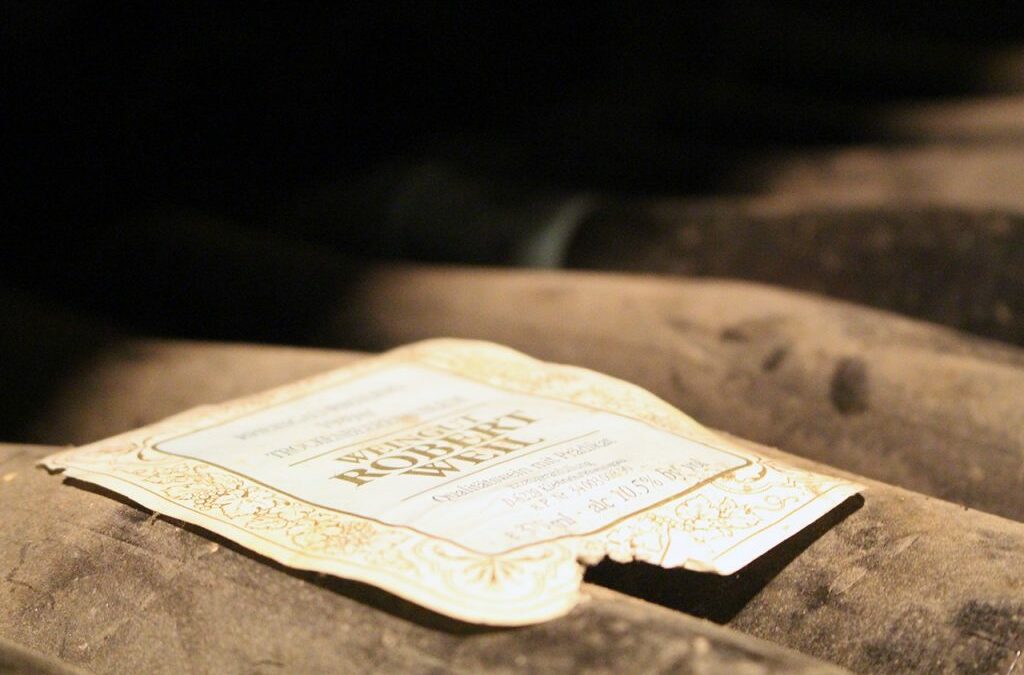Admittedly, those of us coming from the online industry have a nose for buzzwords: every year, a new trend is hyped up. And what the online industry can do, winemakers have long been able to do. Whether in Germany, Spain, Italy, or France – everywhere tradition meets modernity. No wonder then that a Google search for “winemaking, tradition, modernity” yields a whopping 103,000 search results. Why am I mentioning this? Simply because the Robert Weil Winery embraces this challenge. So, no need to emphasize it with over 100,000 Google hits? Absolutely yes!
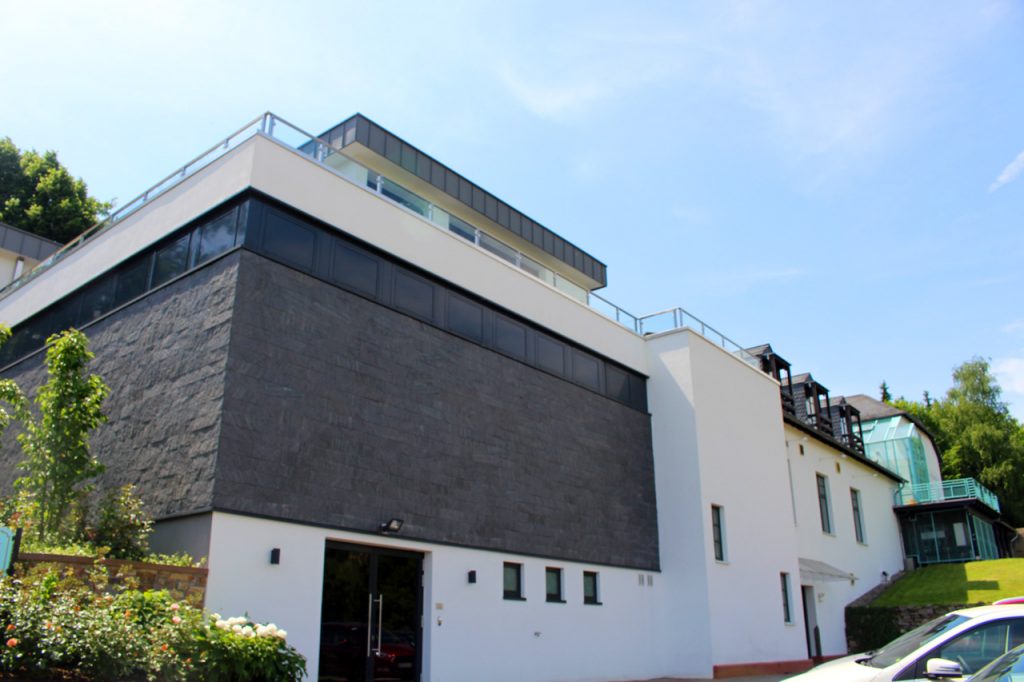
The Robert Weil Winery welcomes visitors with its modern new building
At Robert Weil in Kiedrich, you can already feel the interplay when the car tires crunch into the gravel driveway and your gaze wanders over the modern new building, which has been added to the historic manor house. The Robert Weil Winery does not hide this new building behind venerable walls. It welcomes visitors and guests directly with this impression. The clear, straightforward architecture reflects the character of the winery and its wines. Here, the willingness to not only talk about the future and development but also to put them clearly in the foreground without forgetting the roots is omnipresent. Thus, the modern winery of the new building is linked with the historic cellar vaults. This self-image is also reflected in the wines and the entire appearance of the Robert Weil brand.
As part of a pre-event for the “International Riesling Symposium 2017“, we were guests of the VDP.Rheingau the day before. An unforgettable day that began at the Robert Weil Winery, later took us to Schloss Johannisberg, and finally found a worthy conclusion at Schloss Vollrads. Definitely too many impressions for a single article, so I will first focus only on the Robert Weil Winery.
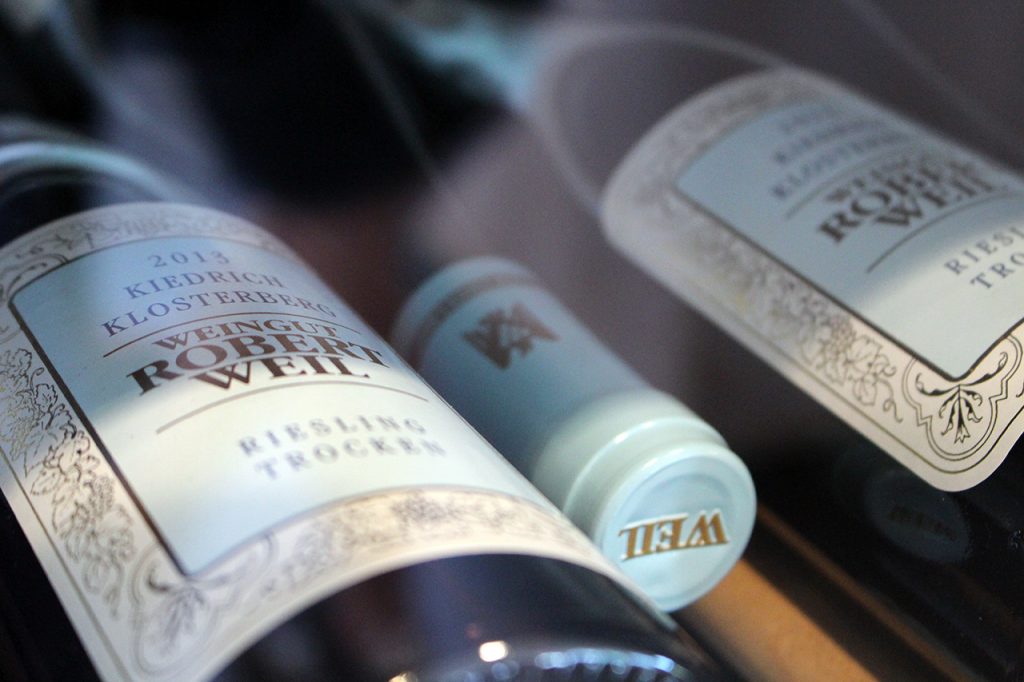 An eye-catcher with high recognition value: the typical Tiffany-blue labels of Weil wines.
An eye-catcher with high recognition value: the typical Tiffany-blue labels of Weil wines.
More than a Welcome
Already the reception at the Robert Weil Winery was sensational: under the bright midday sun in sensational architecture against the backdrop of the Turmberg, tasting some of the best German Rieslings was an impressive start! Before we were allowed to take a look behind the scenes of this Rheingau “Château”, Wilhelm Weil, the charismatic great-grandson of the winery’s founder, opened the event. But he really surprised us in the afternoon in the cellar of Schloss Johannisberg – more on that in another article…
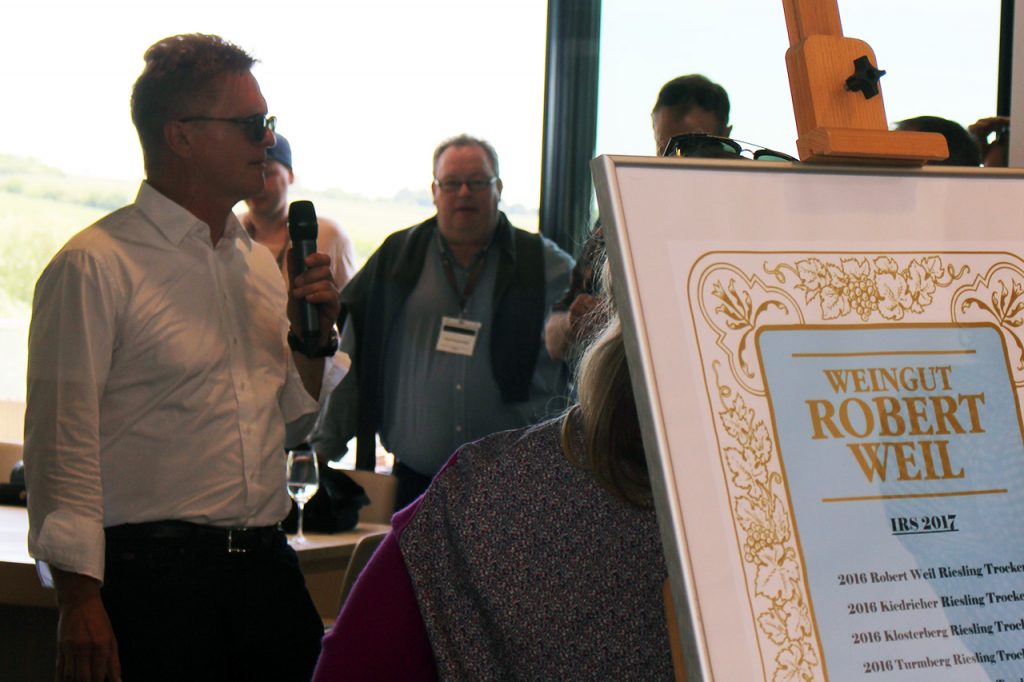 Welcome by winery manager and winemaker Wilhelm Weil
Welcome by winery manager and winemaker Wilhelm Weil
With the Master in the Cellar
Of course, I did not miss the chance to take a look behind the scenes at the Robert Weil Winery. Cellar master Christian Engel, who has been in this position for 23 years, guided us through the production and told us about the busy workdays – especially during the harvest season. The grape intake phase only lasts about six weeks a year, and during these weeks, up to 60,000 liters are brought into the tanks daily! By the way, 100 percent Riesling.
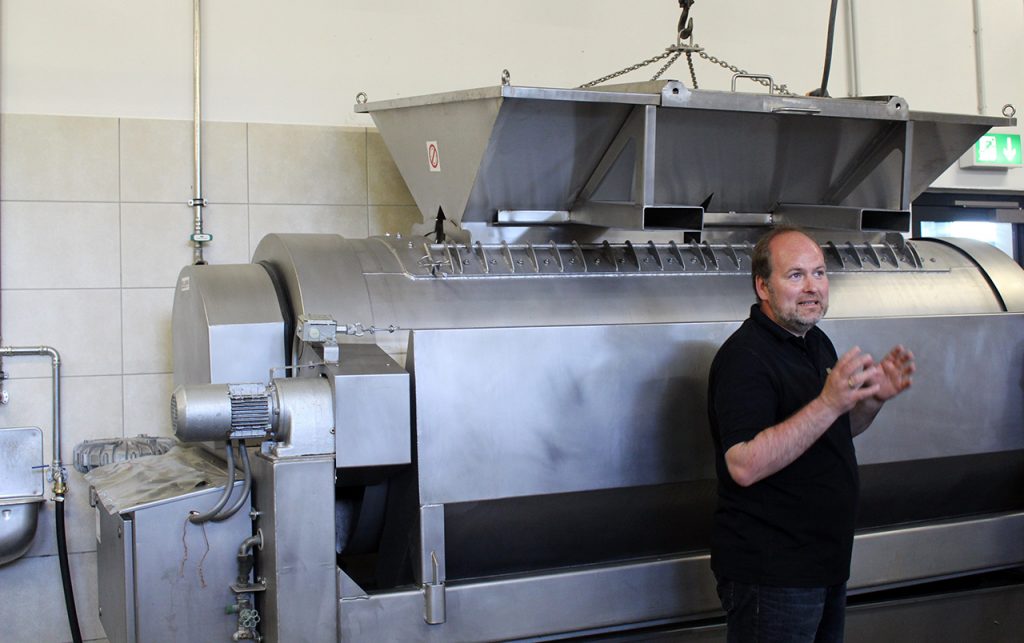
Cellar master Christian Engel leads through the Weil cellar
At Robert Weil, the use of wooden barrels is making a comeback. While the trend of the 1990s was also evident here, and aging in wooden barrels was kept to a minimum during that time, the storage wines at Robert Weil today see wood again. “But,” emphasized cellar master Engel, “this is not a question of quality or goodness, but a question of style!” Wines matured in wooden barrels are more opulent.
Natural Corks for All Storage Wines
A trend of recent years, which was based on the temporarily poor quality of cork, is not found here: only about 10 percent of the bottled wines receive a screw cap. The other 90 percent are sealed with natural corks. And of course, not just any natural cork. All corks come from only one producer who knows the style of the wines. According to Engel, the basic rule is: “Everything that is stored always has a cork here” – which then costs about one euro per cork.

Stainless steel tanks in old vaults
And letting wines age is always worth it! This also speaks for aging in wooden barrels, because these wines, according to Engel, have more storage potential, while wines from stainless steel tanks lose their freshness and crispness earlier. As always, quality takes time – young wines are indeed crisp and fresh, but they lack the maturity on their way to the highest quality, says Engel.
Robert Weil Winery at a Glance
The Robert Weil Winery was founded in 1875. Today, it is led by the charismatic Wilhelm Weil in the fourth generation. The vineyard sites of the winery cover around 90 hectares. Robert Weil cultivates exclusively Riesling. Wilhelm Weil has succeeded in bringing worldwide recognition to the winery with the often-cited “Château character”. Today, the Robert Weil Winery stands for rarely achieved continuity in the production of great wines.
The Weil Rieslings are characterized by the minerality of the slate soils around the village of Kiedrich: Kiedricher Klosterberg, Kiedricher Turmberg, and Kiedricher Gräfenberg. Here, the character of Riesling is perfectly expressed: its fine, integrated acidity, its complexity, elegance, and finesse. The easily recognizable, Tiffany-blue label is a real eye-catcher. The wines of Robert Weil are VDP-classified. From estate wines to local wines, the first vineyard (Kiedrich Klosterberg and Kiedrich Turmberg) to the grand vineyard (Kiedrich Gräfenberg), all classification levels can be found in the Weil range.


